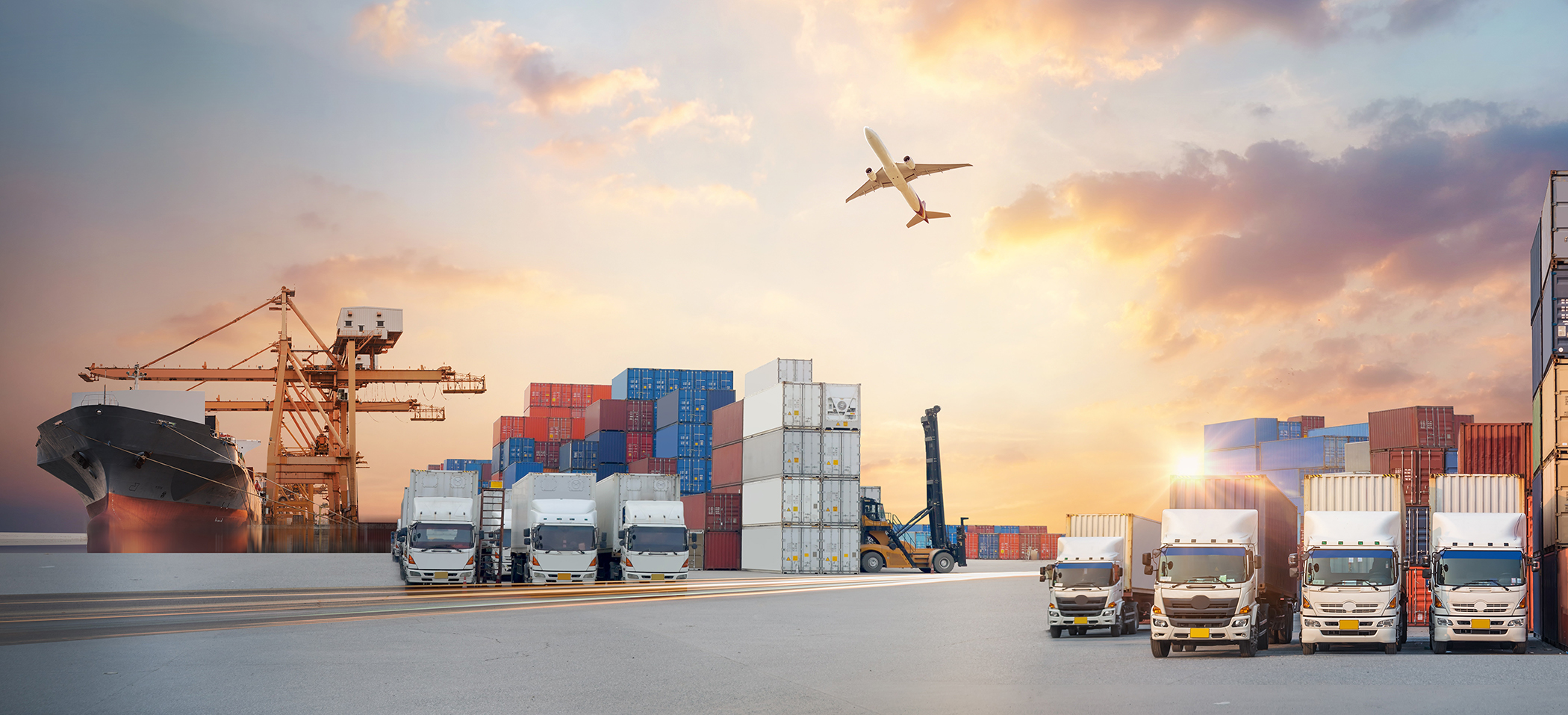
By Hallie Forcinio, writer, PostPress
Supply chain disruptions are soaring. Compared to 2019 (before COVID-19), global supply chain disruptions have more than tripled to 11,642 in 2021, according to Statista1. This is no surprise to anyone who ships/receives anything or buys, sells, prints, finishes or converts paper, paperboard or corrugated. Incredibly, it seems supply chain issues are worse now.
“We just didn’t have these issues pre-pandemic,” commented Mark Baugh, president at Baugh Graphic Finishing House, a specialist in embossing, foil stamping, coatings, diecutting, folding and gluing. Todd Greenwood, chief commercial officer at Case Paper, a supplier and converter of paper and paperboard, agreed. He recalled, “Looking back to March of 2020, paperboard and packaging, in general, seemed to weather the storm fairly well. Business remained robust for many of those producing folding cartons and corrugated boxes. Commercial print took a hit for sure. From our perspective, we saw demand pick up in both segments, especially commercial print, around August of 2020. Since then, activity has continued at a feverish pace. After customer and mill inventories began to be depleted, the unmade order book started to grow and hasn’t let up yet. The demand for product certainly is there, the trick is fulfilling it. We are all working within the constraints of allocations.”
Supplies are tight. Production of paper, paperboard and corrugated is not keeping up with demand and any inventory cushion has been consumed. “Paper and paperboard supply has been one of our biggest challenges over the past 10 to 12 months,” said Greenwood.
 Maintaining its inventory of paper and paperboard has been a huge challenge, agreed Eric Longnecker, senior buyer at Diamond Packaging, a converter of paperboard cartons. He said, “We were fortunate we were able to produce when others were totally out of paperboard. Some paper companies basically turned off the supply, some restricted what we could buy. Virtually all had longer lead times. Corrugated has become especially problematic.”
Maintaining its inventory of paper and paperboard has been a huge challenge, agreed Eric Longnecker, senior buyer at Diamond Packaging, a converter of paperboard cartons. He said, “We were fortunate we were able to produce when others were totally out of paperboard. Some paper companies basically turned off the supply, some restricted what we could buy. Virtually all had longer lead times. Corrugated has become especially problematic.”
“We don’t buy any paper, but we work with printers and know some companies are shutting down halfway through the month because they are out of paper,” reported Baugh.
Then there are the logistics problems. Baugh said, “The freight system is disastrous right now. It’s 100% unreliable. Delivery guarantees are almost a joke. We have to build in more time.” What used to be accomplished in three or four days now takes two weeks. He explained, “A lot of projects we do are really time-sensitive cartons or direct mail. If we miss delivery by a day, it’s a big deal, so we try to do everything we can to compensate.” Fortunately, he said, “People are much more understanding today about these issues than they were a couple of years ago.” Nevertheless, he warned, “Customers can’t wait until the last minute to cut a purchase order.”
Other materials needed for printing, finishing and converting also have been in short supply. The deep freeze, which hit Texas in February 2021, caused chaos in the supply chain for any product related to fossil fuels, delaying production and delivery of products such as adhesives, inks and coatings. These difficulties expanded as 2021 progressed, to the point that, “December 2021 was the most difficult yet for maintaining the supplies needed to run jobs and provide timely delivery,” reported Longnecker.
Another challenge has been service. With COVID-19-related restrictions limiting travel during most of 2020 and 2021, virtually no service technicians could make in-person visits, nor were many operations allowing visitors entry. That caused lengthy periods of downtime, especially for equipment dependent on technicians based overseas.
Overcoming challenges
With the supply chain constraints, costs have increased, margins have shrunk, lead times have lengthened and it hasn’t always been possible to deliver the specified product as quickly as a customer wants it.
Longnecker reported, “The cost of paperboard increased 25% last year. This reduced margins on contract business.” At the same time, lead times have increased because material orders frequently don’t arrive on schedule or are incomplete. Most lead times have increased by a minimum of two weeks, some have gone from two weeks to eight weeks, and lead times for paperboard from European suppliers have jumped from eight weeks to 12 to 16 weeks. “When you have a commitment for a 14-day turnaround, this is a problem,” said Longnecker. Late deliveries of materials also disrupt production schedules if jobs need to be set aside to await the arrival of finishing materials.
On the logistics side, many suppliers and customers are using their own trucks as much as possible. This control makes it possible to avoid hubs, where goods can be trapped for days or weeks. Less-than-truckload shipments are particularly challenging because the truck might only have room for six skids in a 20-skid order. Meanwhile, the 14 skids awaiting the next pickup experience more handling, increasing the chances of damage
“We are focusing on communicating with customers and planning as far in advance as we can while recognizing the reality of limited supply,” said Greenwood. He stressed, “Planning is the key. Supplier relationships are very important these days, so you should ask suppliers to meet with your key people, sales representatives and production personnel to help them stay informed on the current state of supply chains.” Longnecker agreed, noting when building relationships with suppliers it’s important to emphasize commonalties in philosophy, target industries and practices. For example, Diamond Packaging holds a Diamond EcoVadis Platinum sustainability rating as does two of its paperboard suppliers. “We travel the same path and can help each other,” he explained.
Baugh is using the same tactics: more advanced planning, longer lead times, a willingness to compromise and more detailed and frequent communication. He talked to his suppliers several months ago to ensure supplies of hot stamping foil would be adequate. He recommended maintaining higher levels of inventory in-house by placing larger orders and/or ordering more frequently. He said, “Higher inventory costs are better than machines sitting idle.”
Even with more inventory on hand, some projects may require a compromise or even a redesign. Noting a lot of foil producers are based in Asia, he said, “Unusual foil colors can be a real challenge. It’s impossible to stock odd colors.” Ultraviolet (UV) coatings also have been problematic. Lack of timely availability has necessitated replacing the UV coating with an aqueous alternative or deleting the coating completely for some projects.
It’s important to be flexible and ask about options like replacing gloss paper with matte and then enhancing the piece with spot coatings or other techniques. “We see a lot of projects reprinted on different stock because the first choice isn’t available or has an unacceptable lead time,” said Baugh. “At any given time, some grades may have better availability than others,” added Greenwood.
“We just have to rethink about how to compensate upfront for things that are out of our control,” stated Baugh.
Will 2022 be better?
Looking forward to 2022, the supply chain chaos is not over. “Honestly, I don’t think anyone can predict when it will end,” said Greenwood, noting the many influences beyond the company’s control, including consumer spending; return of workers to the workforce; inflation; port congestion and constraints in ocean, truck and rail shipping; growth in e-commerce; government actions; and the potential for converting fine paper machines to making brown paper for the corrugated market.
He said, “Most experts originally saw a trend of rising prices and tight supply into mid-year or Q3 of 2022. We are not so sure about that now, given the way the year started with more increases and supply issues. Hopefully, by mid-year, we will have a better idea, with better mechanisms in place, to add order to the chaotic times we are seeing today. We don’t see an increase in import volumes this year, at least not until Q4. This will continue the strain on domestic production and pricing.”
Baugh and Longnecker feel even less optimistic and don’t expect any improvement until 2023. Longnecker predicted paperboard availability will get worse before it gets better and fears another freeze in Texas and Louisiana. He explained, “In 2021, there was extra capacity, and you could get what you needed for the most part.” But demand has grown faster than capacity has been restored or expanded so it’s no longer uncommon for suppliers to reject orders. One reason demand has soared is the need to package COVID-19-mitigating products and government actions such as mailing 500 million COVID-19 test kits to US residents. “Each test kit uses paperboard and takes material away from regular users,” noted Longnecker.
The test kit mailing also will exacerbate the difficulties being encountered with logistics. The US Postal Service and organizations such as UPS and FedEx are struggling to make timely deliveries. Demand for trucks and truck drivers has exceeded supply since well before the pandemic started, and the situation has worsened during the pandemic years. With insufficient trucking capacity, shipping costs are rising. For example, the cost of cross-border shipments into Canada has risen 90% in 90 days. The steep increase means higher prices must be charged for the goods, which in turn fuel inflation.
Keeping customers happy
For the most part, customers understand and accept the current supply chain constraints. “Are they happy? No. Is there pushback? Yes,” said Longnecker. He wonders what will happen when the constraints are overcome. Will the frustration with higher prices, longer lead times and compromises on material and delivery times prompt customers to seek new suppliers? He observed, “We’re keeping the business now. How this will affect us in six to 12 months is the wild card.”
To ensure there are no defections once the supply chain stabilizes, Diamond Packaging is making every effort to ensure customer relationships remain strong. In practice, this has meant taking some extreme actions such as agreeing to help a customer by providing a competitor with paperboard to run a job. However, that gamble paid off. The move already has generated new business.
“Planning ahead and educating your customers is key,” said Greenwood. “There is no such thing as over-communicating during this time,” he concluded.
References
- Statista, “Number of supply chain disruptions worldwide 2019-2021,” https://www.statista.com/statistics/1267082/supply-chain-disruptions-worldwide/#statisticContainer, accessed Feb. 1, 2022.

